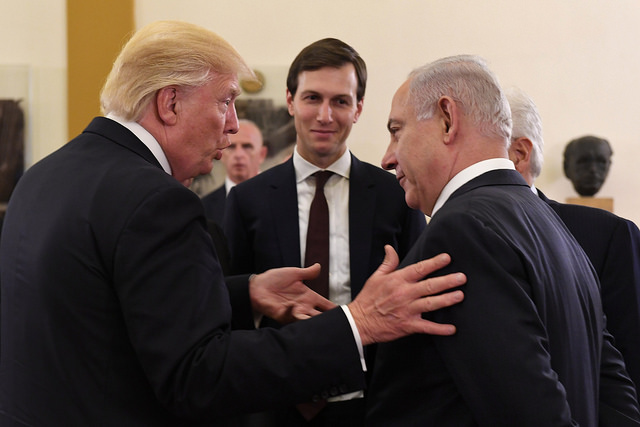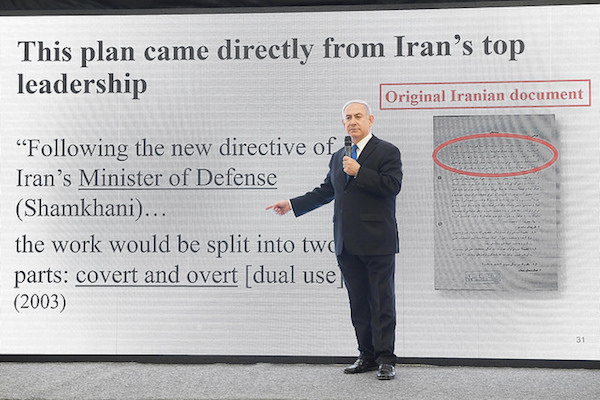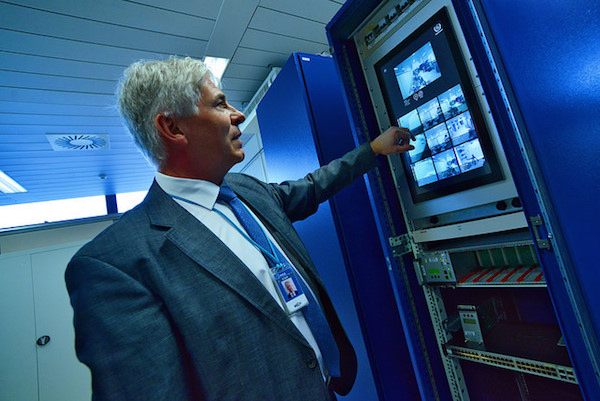All those arguing that the deal wasn’t working or that it wasn’t ‘good enough’ are misrepresenting the facts. Here’s how they’re doing it and why they’re wrong.
By Shemuel Meir

Making good on his ultimatum, the American President trumpeted America’s withdrawal from the Iran nuclear deal (JCPOA) earlier this month. This was the opening salvo in a drive to crush the deal that has blocked Iran’s path to nuclear weapons. The U.S. abandoned an agreement to which it was a signatory without as much as a single breach on Iran’s part. Netanyahu rushed to hail Trump’s “bold decision,” considering this the materialization of his dream to dismantle “the bad nuclear deal.” Trump’s announcement was likely coordinated with Netanyahu.
Trump’s move constitutes a serious disruption in world order. The decision was made contrary to the position of America’s European NATO allies Germany, France, and Britain, who are also signatories. The European partners wanted to uphold the agreement, as did the heads of U.S. military and the intelligence agencies. This is an important point to make in order to understand that, rather than having any strategic-factual basis, Trump’s action falls within the psycho-political realm of seeking to erase Obama’s legacy.
Trump’s decision runs counter to IAEA reports that have established, following hundreds of intrusive inspection visits (including inspections at undeclared sites), that Iran has complied with all clauses of the agreement. It runs counter to IDF Chief of General Staff Lt.-Gen. Gadi Eizenkot’s assessment, which suggests that the Iran deal contributes to Israel’s security by removing the Iranian nuclear threat for the next 10-15 years. Eizenkot’s assessment, given in a Passover interview to Haaretz, rested on that of Israel’s Military Intelligence Branch. In the Israeli decision making system, the Military Intelligence Branch, and not the Mossad, is tasked with providing the National Estimate and with analyzing the situation. This is a point worth taking into consideration in order to separate emotional background noises (“disastrous deal, terrible one-sided agreement”) from real signals.
The arguments put forward by Trump in support of his decision to walk away for the deal were taken more from the realm of evidence fabrication than that of fact. Trump had to invent deal violations in order to “justify” the decision to pull out. The ideas and pseudo-strategic arguments behind Trump’s speech, aimed at undermining the nuclear deal, were supplied by Netanyahu. For example, Netanyahu’s speech at the prestigious British research institute, Chatham House, described how, within a short period of time, Iran would leap forth from the deal (and thanks to the deal, according to him) to produce “a nuclear arsenal of one hundred bombs.” Many similarities can be drawn between Trump’s speech and misrepresentations employed by Netanyahu in order to shoot down the nuclear deal, and so we will address them together.
The first misrepresentation involves an illogical and unfounded argument whereby the very continuation of the nuclear deal would soon put Iran in possession of an atomic arsenal. The “main flaw” in the deal, according to Trump and Netanyahu, is the “sunset clause” (an almost standard clause in nuclear disarmament treaties), which puts an “expiration date” on the limits imposed on uranium enrichment, from where it would only be a short step in their view to a bomb in the near future. The invalidity of the argument is striking, for dismantling the deal would immediately lift the restrictions, allowing Iran to resume its uranium enrichment at will and unhindered.
Worse yet, Trump, Netanyahu, and like-minded research institutes in the U.S. and Israel are twisting the facts. The core restrictions under the agreement — on the number of centrifuges (5,000 allowed under the deal instead of 19,000 before) and the amount of low-enriched civilian-grade uranium permitted (300 kg only as opposed to 10 tons pre-deal) — are in place until 2031 and not until the arbitrary “deadline” they have established, at the end of “the seven good years” counting from the deal’s entry into force. Such a small stockpile of low-enriched uranium cannot be used to make a bomb. Only high-enriched weapons-grade uranium (90 percent) allows a country to make fissile material as a prerequisite for a bomb. And that is the point: the ban on Iran’s weapons-grade uranium enrichment for fissile material is permanent, and does not therefore lend itself to the “sunset” metaphor. The nuclear deal has dramatically pushed Iran away from nuclear weaponry rather than bringing it closer to a bomb, as Trump and Netanyahu would have us believe.

The second misrepresentation consists in suggesting that the “atomic archive” exposed by Netanyahu in his impressive spectacle was “definitive proof” that the Iranians, who lied then, are still doing so today. Netanyahu’s archive show (which Trump warmly embraced and was probably in on) was meant to give listeners the impression that Iran’s coordinated nuclear weapons program, the Amad Project, which shut down in 2003 (according to the “atomic archive,” but also according to U.S. military intelligence and the IAEA), is alive and well and clandestinely in operation to this day despite the agreement. Again, there was nothing new in the “atomic archive” presentation, which covered warhead designs, modellings and simulations, studies in preparation of nuclear testing. The IAEA was aware of and had analyzed all the components of the Amad Project in its final report of December 2015.
Hundreds of inspections by the IAEA as well as U.S. military intelligence reports naturally refuted the continued existence of the secret nuclear program, which, as mentioned, was discontinued. The IAEA has repeatedly affirmed, following the exposure of the atomic archive, that it had “no credible indications of activities in Iran relevant to the development of a nuclear explosive device after 2009,” and considered the issue closed after presenting it in its December 2015 Final Report. Netanyahu was trying to deliberately mislead, portraying the archive as “something new” that proved a current violation of the deal by Iran (“the smoking gun”), but this is not the case.
Moreover, the raison d’être of the nuclear deal is to prevent the recurrence of those past violations. The agreement is not based on some naïve belief but, to the contrary, on the premise that Iran must be suspected and closely scrutinized in its civilian nuclear activity as permitted under the NPT treaty. The deal was, in fact, built on distrust and a critical, constant need for the most intrusive verification and inspection mechanisms in nuclear history. Almost every one of the agreement’s clauses was designed to block and close past breaches as well as future possibilities for developing nuclear weapons. Scrapping the deal will seriously affect the ability to gather intelligence on Iran on the ground.

A third misrepresentation is to weave unrelated issues into the nuclear deal. The Iran nuclear deal, as its name suggests, is an arms control agreement for preventing proliferation of nuclear weapons. Nuclear weapons are in a league of their own, far above any type of unconventional weapon. Thus, the long list of “flaws” adduced by the deal’s opponents are beside the point and unrelated to the debate on violations. The nuclear deal is not about terror and Iran’s regional activity, nor is it about ballistic missiles (which other Middle Eastern countries, like Saudi Arabia, also possess). Furthermore, the claim that Iran’s regional activities were enabled by the JCPOA was being made by its proponents long before the agreement was even signed.
In the future, a complementary regional agreement to address ballistic missiles could be considered, but it is important to emphasize that missiles developed by an Iran whose path to nuclear weapons has been blocked and is subject to an intrusive inspection regime of all its nuclear facilities are, by definition, missiles carrying conventional warheads. On the other hand, killing the nuclear deal and dealing a blow to the inspection system in place might produce a double negative, with both an unrestrained nuclear program and ballistic-missile development on the menu. The threatening scenarios painted by Trump and Netanyahu involving nuclear warheads might actually become reality after the deal with Iran is cancelled.
The fourth misrepresentation commonly spun by the agreement’s opponents is that the major mistake committed by the powers was that, by signing the deal in coordination with the IAEA, they gave Iran a “certificate of good conduct” and an acquittal allowing it to keep on misleading everyone and secretly developing nuclear weapons. This is, of course, a fallacy. Whoever understands how the IAEA works knows that the agency did not close the “Iran file.” What the deal actually means is that, due to Iran’s prohibited activity in the past (a coordinated nuclear weapon plan up to 2003), Iran is now “on probation.” The intrusive inspections were meant to allow the IAEA (“the probation officer” in our analogy) to publish the Broader Conclusion by 2024 (the date envisioned in the JCPOA).
Only after the Broader Conclusion notice (in the IAEA’s technical parlance) is received whereby the IAEA affirms (if such is indeed the conclusion) that no nuclear materials are being diverted from the supervised civilian uranium enrichment program to a secret nuclear weapon program—only then will it be possible to lay to rest the suspicions against Iran with respect to its past activities. Until that IAEA “green light” comes about, Iran would have to wait a number of years and prove its good behavior. Let us note that in the case of South Africa (that built and kept an arsenal of six atomic bombs), the final acquittal, the Broader Conclusion, only came through nine years after its nuclear weapons were dismantled.
To conclude, Trump’s move to destroy the nuclear deal, with Netanyahu actively cheering on, is a strategic mistake. Trump and Netanyahu seem to attribute little importance to “the day after” the U.S. backs out of the nuclear deal and the unintended, undesirable consequences, such as Iran abandoning the deal and resuming a uranium enrichment program exceeding the low civilian grade allowed; or Iran abandoning the IAEA Additional Protocol, which guarantees the continued intrusive inspection regime at its nuclear sites.
Let us emphasize that Israel, who is not a party to the NPT, is paradoxically among the principal beneficiaries of the Iran deal, which has blocked a new candidate’s (Iran) access to the regional nuclear club, lifted an existential threat off its neck (and only nuclear weapons pose an existential threat) and prevented a domino effect of a nuclear arms race in the Middle East (involving mainly Saudi Arabia). Israel could lose all of these if the move to terminate and erase the JCPOA is successful.
The future of the nuclear deal with Iran has now entered a stage of uncertainty. It hangs on the extent to which the European NATO partners are determined to persevere in upholding the deal (which they certainly are, so far) and the extent to which they would be able to provide financial guarantees and protection to European corporations that stand to suffer from Trump’s sanctions. The European position will determine Iran’s decision on whether to stick to the agreement.
At any rate, the fantasy of “achieving a better deal” — which translates into nothing less than a “zero-centrifuge agreement” in Netanyahu’s view — is just not going to happen, especially when a good agreement is already in place and has already blocked Iran’s pathways to nuclear weapons. The upcoming period could be tense, fraught with confrontations and risks of escalation through miscalculation by the parties, while in the background, voices are heard in the U.S. and Israel heralding the return of preventive-war scenarios.
Shemuel Meir is a former IDF analyst and associate researcher at the Jaffee Center for Strategic Studies at Tel Aviv University. Today he is an independent researcher on nuclear and strategic issues and author of the “Strategic Discourse” blog in Haaretz, where this article first appeared in Hebrew.
